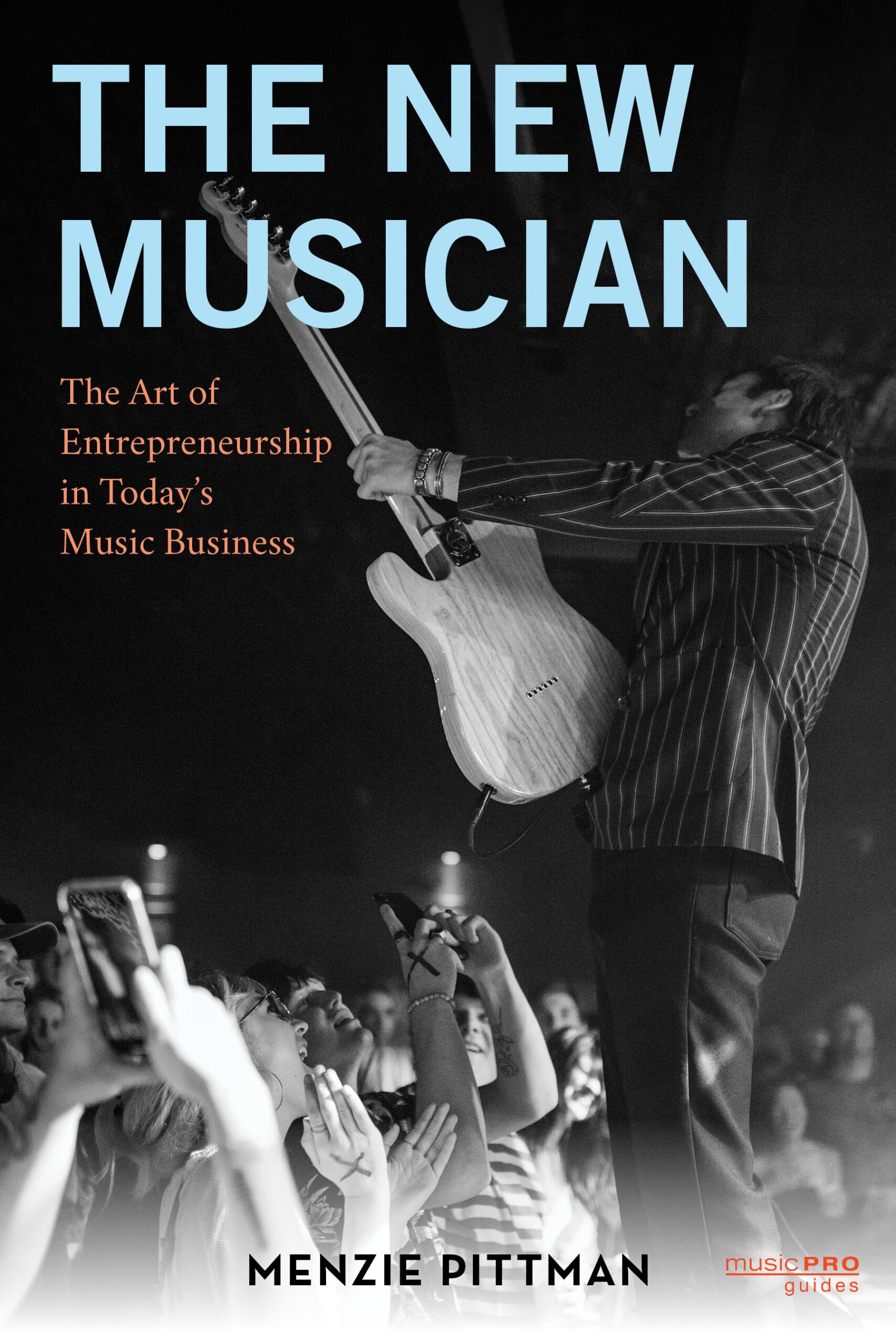 It is not often in the world of “MI” that one gets to see a dynamic, successful startup in a traditional product line like guitar strings. It’s not as if string winders and related supplies are as easy to source as, say, guitar-making supplies and tools. But a then 24-year-old (now 33-year-old) Scott Marquart did just that, in Nashville, Tennessee, in 2014. I have been watching his operation from a distance, and kept hearing about his Stringjoy strings from fellow guitarists in town, and finally decided I should reach out and visit the factory. It was a delightful experience, because not only did I discover a cool new line of great guitar strings, but I left feeling like I was witnessing the birth of a brand that will be here long after I have shuffled off this mortal coil.
It is not often in the world of “MI” that one gets to see a dynamic, successful startup in a traditional product line like guitar strings. It’s not as if string winders and related supplies are as easy to source as, say, guitar-making supplies and tools. But a then 24-year-old (now 33-year-old) Scott Marquart did just that, in Nashville, Tennessee, in 2014. I have been watching his operation from a distance, and kept hearing about his Stringjoy strings from fellow guitarists in town, and finally decided I should reach out and visit the factory. It was a delightful experience, because not only did I discover a cool new line of great guitar strings, but I left feeling like I was witnessing the birth of a brand that will be here long after I have shuffled off this mortal coil.
When did you start Stringjoy?
November 2014 was when we sold our very first pack of strings. I’ve always been into music and guitar was the way that I would express that most frequently. I knew I wanted to start a business and I wasn’t sure what. I took this long undertaking of evaluating all the things that I could do, and one thing came to my mind, which is in high school, at some point, I started fiddling around with guitar string gauges. It was just everything I could do with a guitar back then that I could afford to or had the know-how to, I would want to customize and change. I started buying a couple different sets of strings and mixing around the gauges. Initially, I had played a 10-46, then I liked the 10-52 set. But I wanted something in between there, so I started buying a pack of 11s and a pack of 10s and mixing them together.
And then, later on in this process when I’m trying to think of what can I do, what value can I deliver to the world, that was one thing that came up. I was like, “I wonder if anybody else has this weird habit of buying different sets of strings and mixing them around.” I could never find the same brand or the same style in the certain gauges that I wanted.
So my first thought was, what if I just make this easier? I contacted a guitar string manufacturer and got them to agree to make me 12 of every single gauge of string for electric and acoustic guitar, which I didn’t realize until later was, like, such a pain for him to do. I launched Stringjoy. I knew enough about how to code out a website from what I had done in the music industry, and I knew a little bit of marketing. I launched it as just a custom string shop. And that was the pitch at the beginning. It wasn’t like, “Hey, these strings are amazing,” per se. It was, “Do you play in a weird tuning or play a seven or an eight-string guitar?” Which at the time was just starting to become more and more popular, but there weren’t a lot of strings for them. If any of these things apply to you, email me. I’ll work with you and find a perfect set for exactly what you’re doing on your instrument. And I’ll package it, put it together, ship it out to you.
Our second month in business we did about $2,500. I was [then] bartending, I was like, “Hey, that’s some serious money. There might be something here.” I started ordering larger quantities of each individual string and just in the process of the way that my brain works around things, I started to dive really deep into what makes a string a string. Learning about the different materials, of course, but also learning about different ratios that you could use with a thinner core or a thicker wrap wire to make the same gauge. I started calling the guy who was making my strings, same guy who made the 12 of each, and saying “Hey, I want these, but this time on the 36s, could you use a thinner core wire? I want to use a 14 instead of a 15. I want to see what that does. I think it’ll work a lot better in certain sets that I’m building for people.” And he only put up with that for just a couple of months. I’ll never forget the phone call. He called me [and said] “I’m selling you two winding machines and you’re gonna never ever call me again about this stuff.” So at the time, I never really had any money to work with. My parents are teachers. I had 500 bucks when I started the business. I was trying to figure out how I could get a loan to buy these two winding machines. They were not incredibly expensive, but, you know, I didn’t even own a car.
What did they cost?
So those early ones, I got two for 30 grand. I would have been 26 by the time that happened. I certainly didn’t have it. I didn’t have family money I could draw on. I dove into how to get SBA financing, was able to get an SBA loan for a little bit more than that, because I had to buy wire too, and got these two machines. They’re still in service. They’re very manual. They’re basically built in the early ’80s. I’ve completely swapped out every single part on these two to make them work the way that I wanted to.
He showed me through how they do it, how they made their strings, so I would understand how to operate the machines. And it wasn’t 24 hours that went by after I had these delivered to Nashville and was making strings that I was completely changing the way that they worked and saying, “Oh, okay. I see how this works. But what if it didn’t work that way? What if it worked a little bit differently?” We continued this constant curious process for a long time and ended up finding a lot of ways to make strings better. This is what led the transition from the early days of being a custom string shop to being a company where it’s like, hey, the strings are the thing. Even if you’re playing the same gauge that you’re playing with a different company, we can make them better and get you performance out of your instrument that you haven’t had before. That led to that big transition towards Stringjoy becoming really a traditional guitar string brand ,rather than kind of an niche service online.
What is the origin of the Stringjoy name?
Well, in the early days, when I was thinking about it, ultimately, and I was thinking all about gauge at the time, because it was all custom gauge in those early days. I noticed from talking to other players and asking people why they use certain strings and why they like certain configurations was always that, they were like, “Yeah, I use D’Addarios because they’re good. I use Ernie Balls because they’re fine.” But, not one person ever, ever told me, “These strings made me want to play my guitar more. They brought me joy.” I was thinking about that and how that might interweave to the name, we settled on Stringjoy to try to fulfill that promise of whether it’s through gauge or through craftsmanship, or all the different parameters that we put into making our strings unique, we want to give you a set of strings that [cause you to] feel joy when you put them on.
Over the past couple of decades, the secret of the string world is that only a handful of companies manufacture them in the USA, and those companies OEM/custom package for some historically well-known string brands, with the end-users usually not having a clue about that. Stringjoy started out selling OEM strings, now you make your own. How did you work to get word out that you actually make your own strings?
You wouldn’t believe how many players still to this day don’t believe us when we tell them that we really make them because of that. I [called on] a dealer that was not too far away from us, and he was like, “Hey, I heard that you guys don’t make ’em. They’re just somebody else’s. We’re not interested.” And I was like, “Hey, you hear that noise behind me? That’s the winding machines. You can drive here and I’ll show you.”
Let’s talk about the retro-style packaging. I like the hard boxes, and design. They look like an old brand I should have been playing for years, but they are new.
When we came up with the packaging – and it was a big labor of love – I spent many years kind of perfecting it, it was really important to me because I felt the strings inside deserved to be packaged a certain way that would raise the player’s expectations. I want them to have really high expectations when they get the string set in their hand. I didn’t want it to feel like this brand new, very sleek, new brand. I wanted it to feel like something that’s always existed, maybe, and it have that quality and substantial feel to it. We individually seal every string in a nitrogen flush barrier pouch so that you can pull out your high E-string if you need it, and keep the rest of the set fresh.
There are only “X amount” of wire suppliers in the U.S., right? One of the first things that I learned and was delighted to hear is that you actually get your wire in Tennessee.
The vast majority comes from Tennessee. Our secondary supplier’s just over the state line in Kentucky. We do have a few suppliers in other parts of the country for specific things that I like.
One of the things I enjoyed about the factory tour was watching your enthusiasm when you went into minutia on the number of wraps after the ball end’s put on. I thought, “You know, in 30 years of being at NAMM I’ve never seen anybody talk to me about string wraps that way.” As a guitar player, I really dug that because I felt like, okay, I don’t have to think about that. This guy’s thinking of this for me and he’s making a better product.
Yeah. This guy’s gonna wake up in the middle of the night with an ah-ha moment about how we carry the tension on the wrap wire as we apply it, and I’ll benefit from that without having to be the guy thinking about it.
I think, it’s a very old industry. I mean, there are a number of families in Europe that have been making strings for 300 years and there’s really awesome things about that, being able to pass information from father to son or father to daughter over generations. The thing that falls off a little bit there, though, is you accept something as the way that it is, because that’s the way my granddad told me. But when you get into something the first time, you question all those things and everything, there’s no, oh, because that’s the way we do it. You wanna see what happens if you don’t do it that way and you’re willing to break things and not really have to bend the tradition.
Your journey began with online, direct sales. When did you turn the corner and say, “I really need to start focusing on dealer sales” and what steps did you take at that point to go to retailers?
I think people had a notion that I was anti-retail because we were selling direct. But the truth is, any dealer that we could talk to said, “Well, you don’t have any customers.” And I said, “Well, I don’t have any stores.” We had to go out and build our market ourselves. Strings are not something that was necessarily easy to just convince a dealer to take on. They wanted to know their customers already had demand for these strings. So we set out to create that demand on our own through direct sales in the early days.
Once we started making the transition into working with music stores, it was a very different equation because it was, “Hey, I asked my customer base or asked my employees. Several of these guys already use your strings and they buy them from you direct. Can I put them in my store?” And the answer of course is, “Yes, absolutely. We’d love you to.”
But we’re only a couple years in, probably about four or five years in, on truly starting to focus more on mom and pops. And we’re getting a ton of momentum there now. It’s a huge focus for the business now because strings, you want to have them available everywhere. I don’t want to lose a customer because they have a gig coming up, they ran out to their local music store and they didn’t have Stringjoy and they had to buy something else. So getting in those stores and being a string that they’re willing to recommend and believe in, themselves, is absolutely huge for the brand and it’s pretty much where all of our focus is on now.
I think we’re over 400 stores now and hopefully have many, many more soon. We’re keeping that marketing budget exactly where it is as a percentage of the overall revenue, so that we can continue to drive that awareness. And what we hear a lot when our sales guys will call a store that hasn’t reached out with just a cold call, initially somebody will answer the phone and be like, “Who? I haven’t heard of you.” And then, somebody in the background, I kid you not, this happens all the time, will be like, “Did you say Stringjoy? No, that’s what I use. I love those.” And it turns out that’s either the customer standing at the counter or the other guy that works there at the same time, which is just, you know, a super awesome thing. And we really just couldn’t have done it any other way than going out and creating that demand and finding 100,000, 150,000 users of Stringjoy strings.
Dealers are very conscious of selling direct. And of course, they don’t like it and they don’t want to compete with the supplier where you’re making literally three times the margin that they are. What kind of margins the dealer can expect when they open up themselves as a Stringjoy dealer?
The thing that we always tell dealers is strings, at the end of the day, work way better in a brick-and-mortar context than they do through direct sales. For one, guitar players don’t anticipate their needs as well as they maybe could. So they usually suddenly need a pack of strings and they can’t wait a few days for them to be shipped out. For two, guitar players like going to the store. It’s not like buying Clorox. You wanna go to the store and see what they’ve got and strings are the excuse. When I was a kid, my dad would drop me off at our local Guitar Center, in Indianapolis. There weren’t as many local music stores, and I would stay there for an hour and a half and he’d come back and pick me up. And I’d buy a pack of strings at the end of the day after I had played every single guitar in the entire store.
To the margin question though. We offer 45 points of margin to dealer. Most dealers we talk to, they’re like, “I don’t make money on the strings.” We’re like, “Well, you’ll make money on our strings.” It’s important for us to have a fair shake with the dealer, because at the end of the day, well, we’re bringing a lot of customers into the store. Our ultimate goal is to continue to grow the brand and continue to grow the customer base. And we know that not only having great strings, but also having a way for dealers to make money and share in that sale in a substantial way, is a great way to encourage dealers to wanna spread that message and want to tell people about them and get them to try them.
We’ve always been really passionate about having great customer service, because it’s so important when it comes to strings. But the other big piece of it is Chris Gilchrist, my VP of global sales who came to us from a very large company in our world, where he was very used to having to have a lot of requirements for dealers, in terms of minimum buy-ins and what they had to do to be a dealer consistently. And his focus, was I want to be the best supplier for these dealers. I don’t want to push them around. I don’t want to ask them for minimum buy-ins or call them up in January and say, “You didn’t hit your minimum. You gotta place this order.”
We have no minimums. We have good margins. We ship quickly and handle them all very fairly. We want to be the string that the dealer recommends, because we’re the easiest to work with. I think new dealers quickly kinda realize that, that we’re here to be your friends and support you as best as we can, and it’s a very collaborative sort of journey rather than something that’s very top-down, where, “Hey, if you want to be a Stringjoy dealer, you have to spend X amount of dollars.” We don’t do that at all. We work with people at all different levels.
So you’ll open up a dealer on a box of 12-strings or a pack or whatever, just to make that introduction, is what I’m hearing?
We will. You know, and ultimately, what those guys, our sales team work with dealers on more than, like, trying to get a certain minimum level of sale. It’s to try to make sure that they’re stocking enough SKUs that they’re gonna have something for what people want. Sometimes people are like, “Yeah, give me just some 10s and some 12s of those.” You’re like, “Well, you’re not gonna effectively be able to take customers that might be shopping at your store that buy from us direct, unless you have several different options.” But they’ll even sometimes split boxes of 12 to make sure, “Hey, we’ll load in 8 SKUs. You only have to buy six packs at a time just to make sure you’ve got what you need to fully test this thing.” That really is their focus and they’re always very cool about working with people to try to achieve the goal of getting the strings that their customers need rather than just filling the wall with as many SKUs as humanly possible.
I would encourage you to make sure that that is a lifelong policy that never changes. Because you’re establishing your brand and your sales around that kind of philosophy and, man, you get successful and the day that changes, it bites you hard. Believe me. Dealers wanna feel supported, loved, and profitable. They want to sell the cool products. That’s what brings people into the store.
My sales guys have more recently realized that with a lot of dealers on our cold calls, we kind of have to retrain them a little bit. They’re so used to getting such poor margins from the big brands and having to sell them at such a low price because there wasn’t M.A.P. in place for a long time, where they were making a dollar a set. That initially they’re like, “Yeah, what’s really the point?” Where for us, with our margins and how good we are with respecting everyone and evening out the playing field, you’re making between $5.50 to $8 per set. So we’ve had to explain to people, like, “Hey, this isn’t the big piece of your business where you sell a $50,000 Les Paul and get a giant margin on it. But if you focus this year, you can pay your rent on just your string sales.”
Well, let’s talk instruments themselves here. Electric guitar. It’s six-string, seven-string, eight-string, electric, 12?
As well as baritone and pedal steel.
We have three different lines of electric guitar strings. Our Signatures, which are our most popular – that’s our nickel-wound or nickel-plated steel – they’re available in the widest variety of sets. So seven-string, eight-string, baritone, Bass IV ,and all that. Our Broadways, hence, the name, it’s a very Nashville product, those are our pure nickel round core vintage style string, those we only offer in six-string guitar right now. They’re a little bit more niche and they’re a little less likely that you’re gonna use them for an eight-string guitar. And then, our Orbiters are our newest addition to the electric guitar string world. That is our coated electric string which is an even brighter sounding string than our uncoated string, which is pretty rare. Those right now are available in six-string sets, but we probably will be expanding them soon. We’ve been getting a ton of requests for seven or eight or baritone sets in those as well. So we likely will expand that quite a bit whereas the Broadways will probably stay a little bit more limited and more of a classical sort of offering.
Mandolin strings, we are launching in July.
In acoustic strings, it’s basically 6-string, 12-string, and we make a baritone set as well. Our Naturals, which is our uncoated Phosphor Bronze, those are available similarly in the widest array of gauges. And then, our Foxwoods have been what’s been really kinda setting things on fire lately. That’s our coated Phosphor Bronze. Same as I mentioned with the Orbiters. It’s gonna be a brighter string than their uncoated counterparts. They’re really awesome for Taylors or Gibson or a Martin as well. Those have been really, really exciting SKUs and moving really quickly in retail as well. And we do offer an 80/20 Bronze line or Brights as well, which is a little bit more of an old school, classic thing, very similar to the Broadways for electric. More of a limited offering, but for players that love those, that’s absolutely the thing. Now our mandolin strings will be offered in Naturals, Brights and Foxwoods, so some coated on, coated and 80/20 all together. We’re not throwing out one gauge for mandolin. We want to really do it and give people the broadest array possible.
If I’m a dealer and want to carry Stringjoy, where do I start?
Sales@stringjoy.com is the easiest way to start the conversation if somebody’s interested in getting ahold of us.
stringjoy.com


























